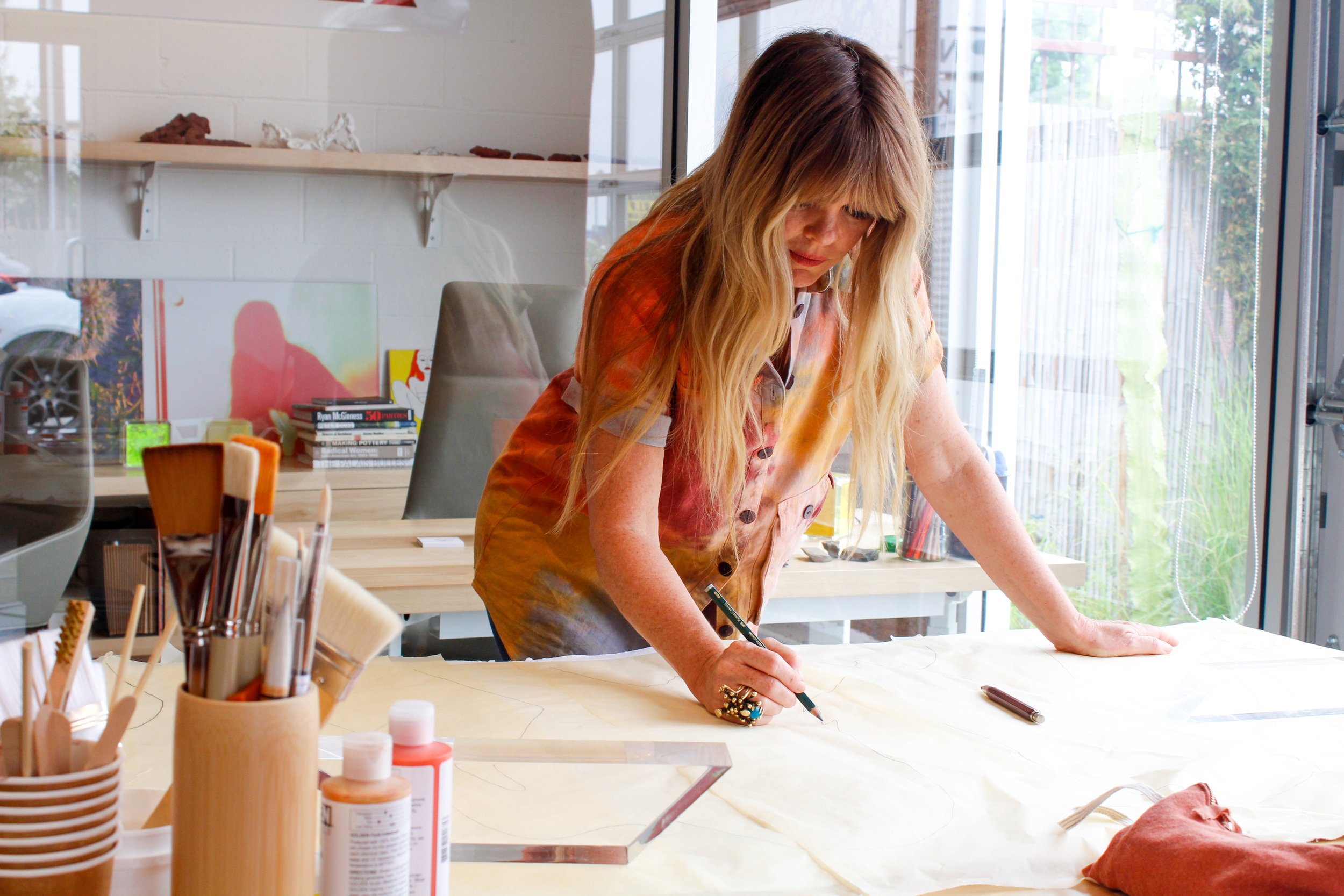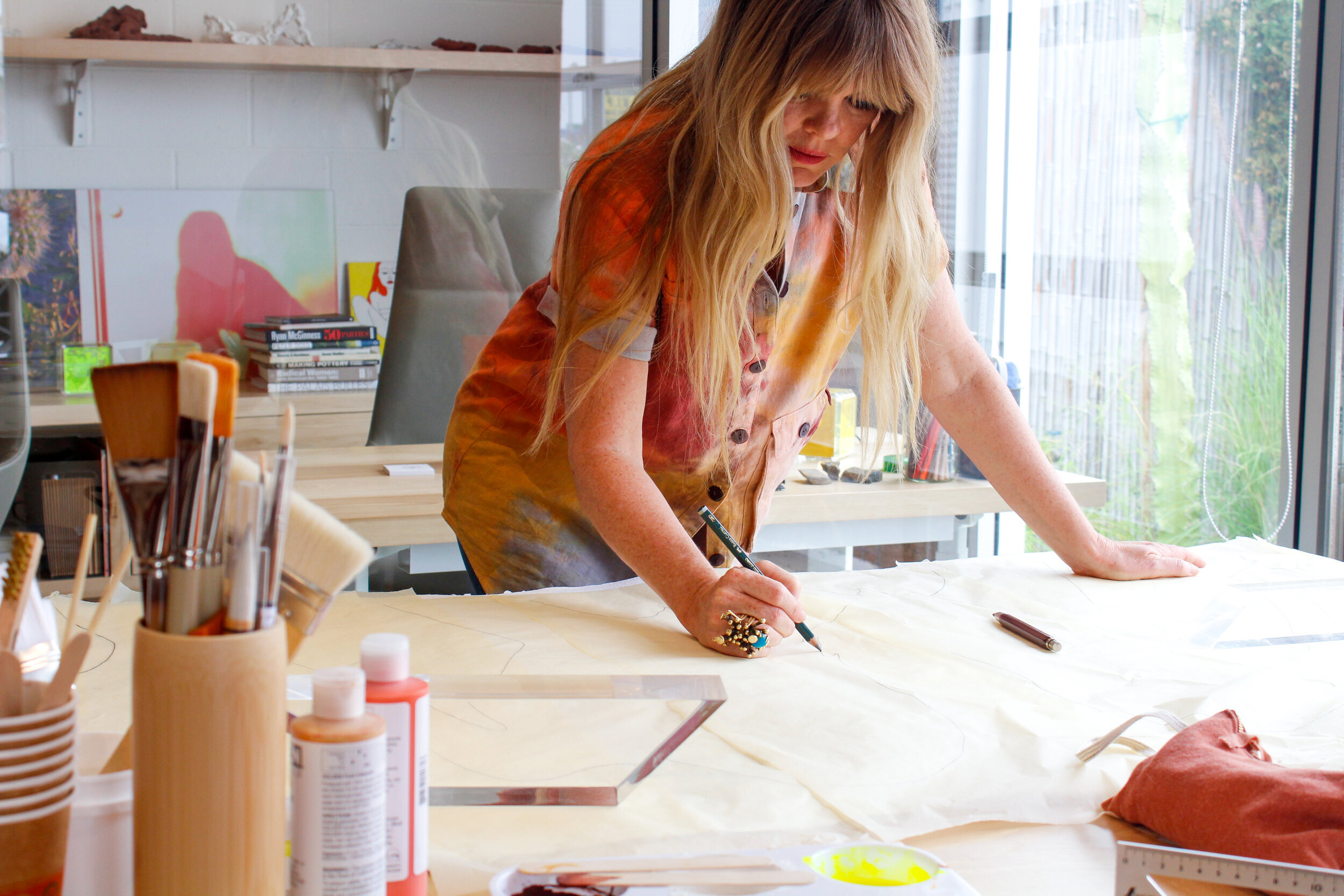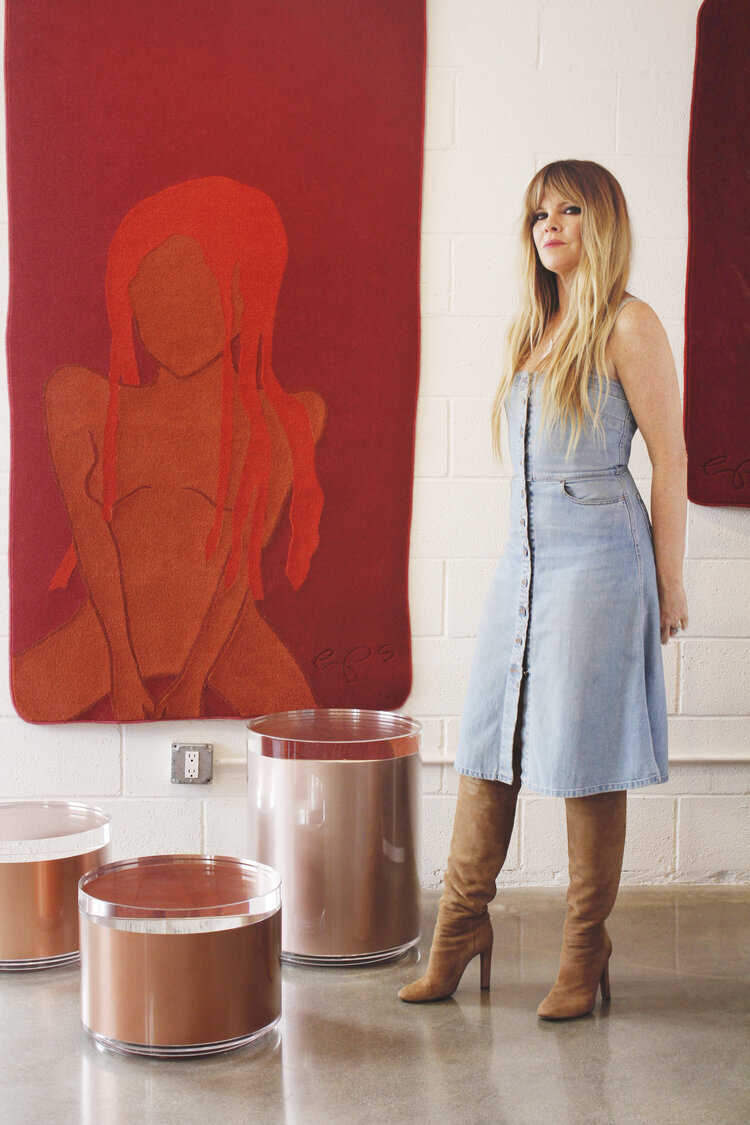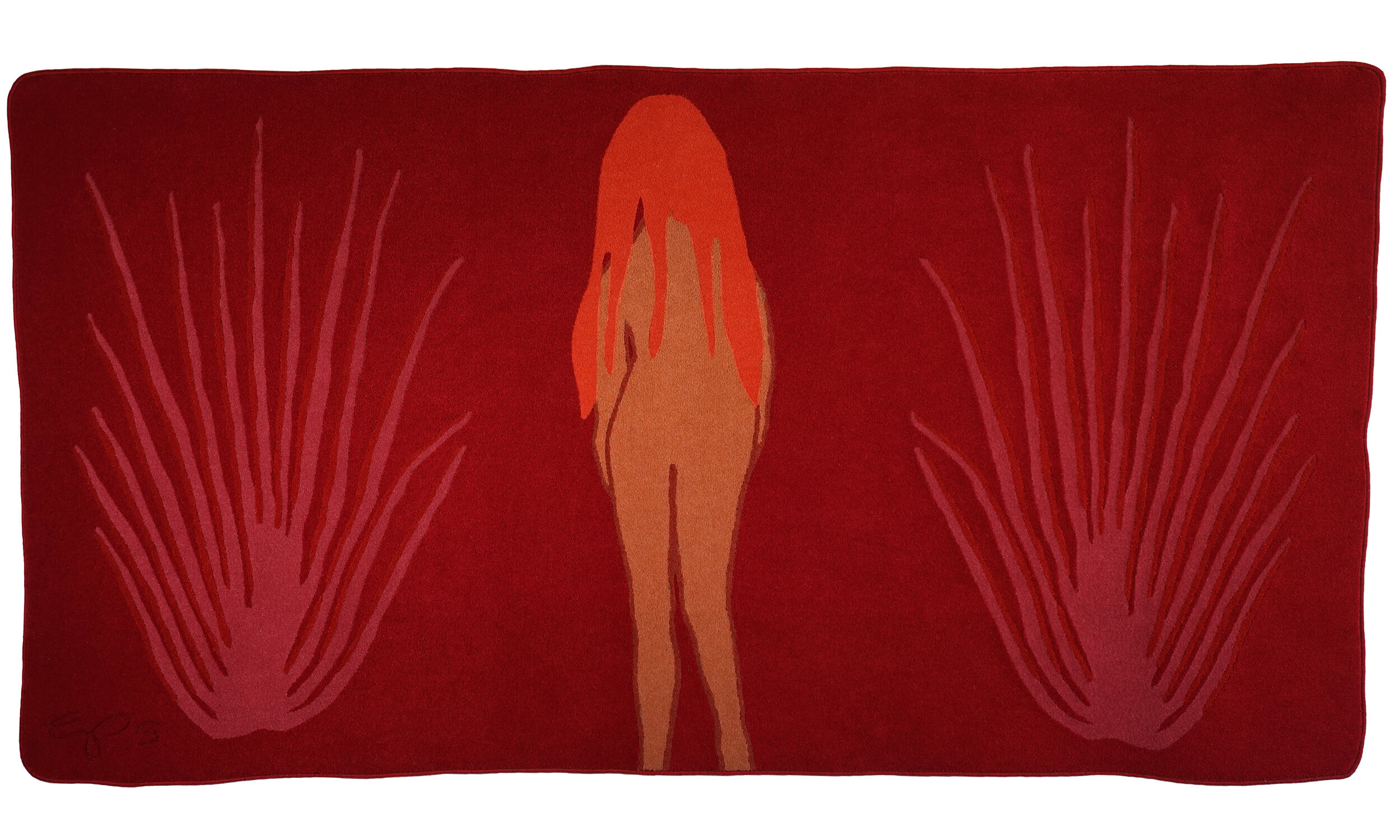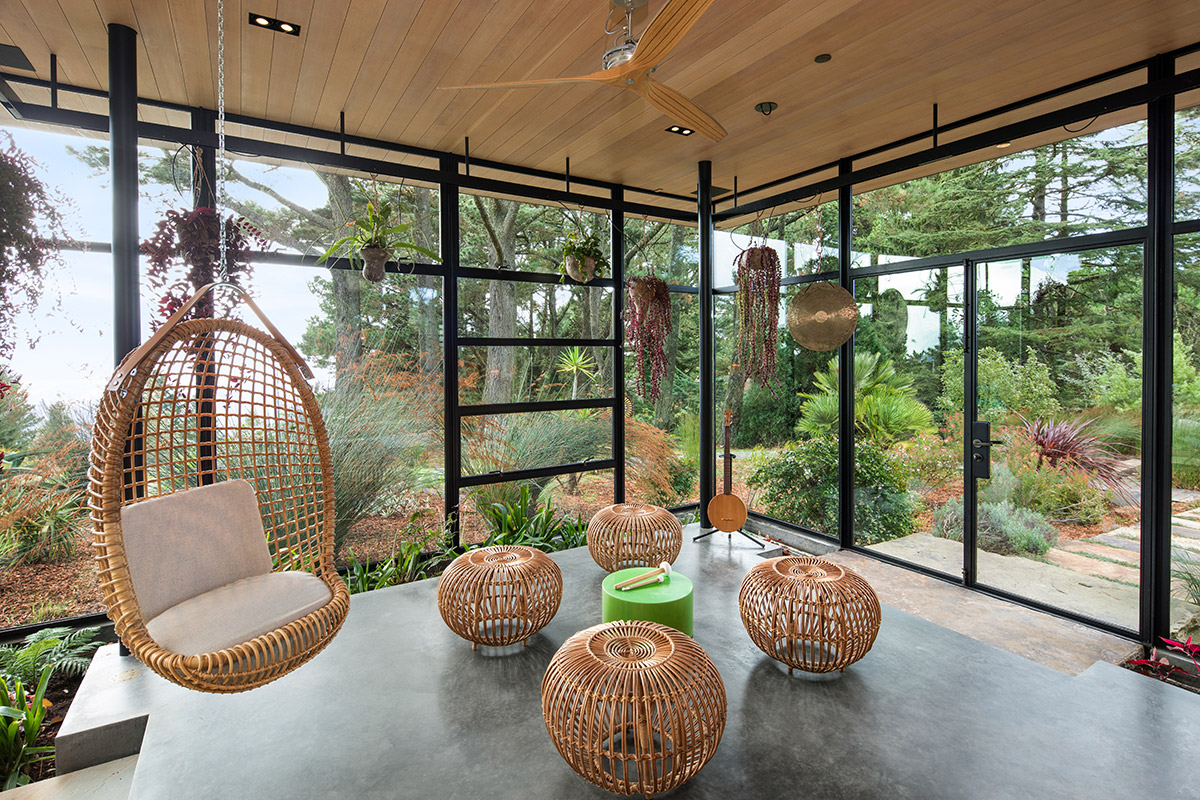FLAUNT
Meet the multidisciplinary artist making new waves in the art world while getting the attention of celebrity furniture collectors.
Written by Joshen Mantai
Artistic Shapeshifting in Equilibrium
While the collective isolation and ensuing mania from the reality of the past nine months has gotten to almost everyone’s mental health—artist Elizabeth Paige Smith is mostly unfazed. She has seized the chaos of quarantine as an opportunity to take a “deep dive into communications,” viewing social media as an advantageous tool for creative possibility. Smith is a renowned furniture designer and artist with a coveted studio on Lincoln Boulevard in Venice, collectors of her high-end tables and vortex commodes amongst the likes of celebrities Gwyneth Paltrow, Kanye West, Kirstin Dunst, and Patricia Arquette. Her unique sensitization to textures, the environment, light, and overall ability to break free from the pressurized conformity of contemporary art have earned her exhibition spots in the Smithsonian Cooper Hewitt National Design Museum, amongst many others. Smith was impressionably featured in the first “Made in California” exhibition at LACMA, along with Sam Maloff and Frank Gehry. FLAUNT had the opportunity to sit down with Smith over Zoom to discuss her search for creative opportunity amidst quarantine, artistic values, and future projects.
Prior to the origins of the pandemic, Smith relays that she had detailed plans for studio visits that collapsed, which she exclaims set her “spiraling back into the emotional headscape I was in before living in isolation.” Smith had an atypical and unparalleled experience that inadvertently prepared her for the pandemic — living for ten years in isolation at the Frank Lloyd Wright Foundation house in Woodside, just outside of tech-buzzing metropolis Palo Alto. During her time away, Smith found inspiration in the midst of her rekindled connection with nature, creating a series of eight stone sculptures titled “Naked and Fucking Free.” “I’ve always found nature as a source of inspiration,” she explains. “I’ve always contrasted my own feelings and thoughts with nature, and the consistency of nature.” Her inspiration for the eight figurines stemmed from her steady fascination with organic matter and geometric figures, crafting sculptures that portray female figures in their sense of emotional independence, but accompanying vulnerability. Smith describes them as representing an “emboldened feminine state,” describing how she purposefully utilized denotatively masculine materials like stone to contrast the conventional thinking of what it means to be feminine.
Smith’s work can easily be described as feminist—a facet she says she was surprised to realize until her friend pointedly referred to her work as such. She stands behind the assumption, being influenced by a long lineage of strong women in her family who worked within various artistic mediums. She claimed the artistic space of design with utter reverence, soon discovering neither design nor art was an easy territory to traipse into. Despite being fortunate enough to capture the rapid attention of acclaimed publications like the New York Times and being invited to exhibit in Milan and Japan with elite design groups, she noticed the male-dominated nature of the industry. “At the time design was male-dominated, run by a group of guys in New York, and no women in America were participating in global exhibitions,” she remarks. “I felt very isolated and unsupported, aside from a few key people.”
However, this did not stop Smith’s ambitions, as she elucidates that not giving up is “a part of the creative war.” Smith continued to shift gears, looking for opportunity wherever she could find it, redefining artistic expression in her examination of raw emotion in her art. This rawness is on display in her series of woven warm-colored tapestries, named “A Very Long Day,” which takes an intimate glimpse into the sensory overload of challenges faced in cherished relationships. “There’s a lot of gravity in that experience,” she shares. “There can be a lot of inner turmoil, and there’s a spectrum we experience, which I focused on a lot in this work.”
Smith’s potent ability to delineate emotionality within physical raw material is an aspect that originated from her inclinations as a child, making creations with mud in the Cayman Islands, where she grew up. Here, Smith expresses that she sought isolation as a form of comfort, spending most of her time underwater, hyper-aware of details, equilibrium, and weightlessness within her domain. “I feel invincible with equilibrium,” she reflects. “All of your senses are nurtured underwater, so it heightens your awareness. Feeling invincible is having your own forcefield. There was a time when challenges around me were out of my control. I was taxed by others’ chaos, and I developed this concept around my forcefield, where I could create my own equilibrium.”
In her exile of the outside world, Smith says she has developed the “chance to pay attention subtly,” something she encourages of other artists around her. In terms of her future pursuits, Smith sees herself “opening up to a more conceptual realm,” already starting to traverse the juxtaposition of human voice and natural sound in her collection of sound poems titled “Waiting For You,” set in a pristine California poppy field. While what work we see from Smith next may be a surprise, it’s clear her multidisciplinary accolades are only beginning, apparent in her unwavering confidence within the exploration of different media, adaptable to any challenge that dares to come her way.
Find the full article here
See more of Naked + Fucking Free | A Very Long Day
Stay Connected
DWELL
A Creative Couple’s Redwood-Clad Home Draws In Panoramic Bay Area Views
DWELL
July 2020
Written by Brian Libby | Photographed by Benard Andre
A Creative Couple’s Redwood-Clad Home Draws In Panoramic Bay Area Views
Elizabeth Paige Smith and Christopher Stringer’s hilltop retreat is a lucent gem on an impressive perch.
Although the Seeds residence is a delicate fusion of glass and reclaimed redwood—a place where every detail has been thoughtfully considered—owners Elizabeth Paige Smith and Christopher Stringer would be the first to tell you that the story starts with the picturesque site.
At this crest of a forested hill near Woodside, California, beyond the sprawling Silicon Valley megalopolis, it’s possible to see both the Pacific Ocean to the west and San Francisco Bay to the north. Yet the view somehow becomes even more beautiful as visibility decreases.
"When the fog comes up from the ocean, you really experience some incredible drama," says Elizabeth, a visual artist specializing in sculpture, tapestries, and film. "They’re some of the most killer sunsets I’ve experienced." Long before the project was completed, the couple got married at the site in 2013, she adds, "because it’s so special there."
A late addition to the design is the expanded entry, which forms a glass corner to provide a first glimpse into the house while extending a canopy and trellis outward. "That, I think, was a pivotal movement," says Gwise. "It took their concept of the glass box and brought it around to the front to give the house a sense of symmetry.”
Juxtaposed against the glass is the home’s other material signature: the use of reclaimed and naturally-stained redwood, which the project’s builder, Louis Ptak, sourced from an airplane hangar being deconstructed at nearby Moffet Field.
"When we got the first batch, we knew it wasn’t meant to be just an exterior experience," Elizabeth recalls. "We were like, ‘It has to wrap and come inside. The redwood really played a major role in bringing the outdoors in.”
If Elizabeth’s artful eye helped shape the house and site’s renovation, so too did her husband, who spent over two decades as a designer for Apple. That’s how Christopher met first met James Gwise, who spent most of the 2000s at architecture firm Bohlin Cywinski Jackson, designer of many Apple stores. "Chris looks for the simplicity in complicated things," Elizabeth says. "We also connect over the emotional impact of bringing materials together."
Take how the redwood panels line up inside. Even as a door closes, or a Murphy bed in one studio folds into the wall, the pattern remains uninterrupted, as if the bed or door simply disappear. Or consider how the wood walls float above the concrete floors in the new addition. "Everything had to be on module, on rhythm," Gwise says. "Not much was left to chance in this house.”
There are many artful details inside, such as a bathroom sink carved into a massive boulder, for which added structural support had to be built underneath the floor, or a white marble step used as the final transition from the wood stairway to the concrete floor. Which is to say nothing of the bold marble kitchen countertops.
And indeed, the Seeds residence has proven to be inspiring. Elizabeth has created several outdoor sculptures there, using an outdoor area beside the house as a kind of testing ground.
"When making art, I like to go by feel and slowly find my way forward," she says, noting that the Seeds house turned out the same way: a series of continuing conversations that led to a simple concept, exquisitely executed. "It’s a really tight ship," Elizabeth adds. "The spaces and how they flow together really harmonize."

